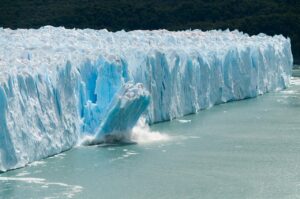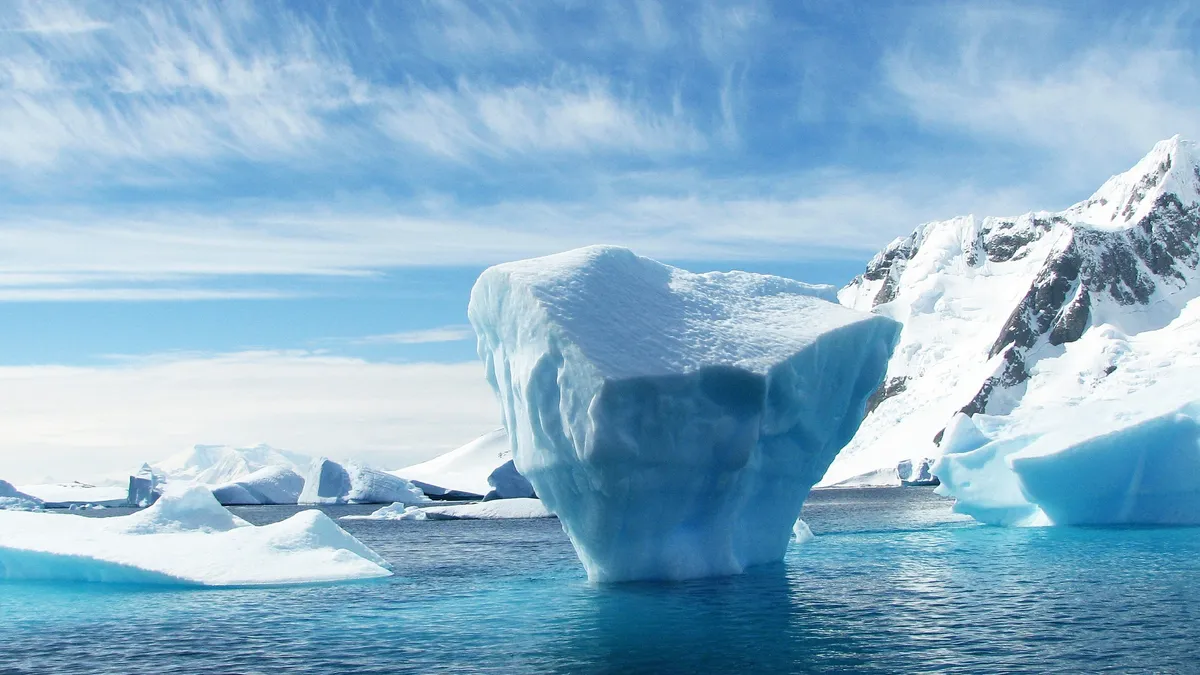In the last two decades, glaciers around the world lost approximately 5% of their total volume, with a significant acceleration in the last ten years, due to melting. This phenomenon is depleting freshwater resources in various regions and significantly contributing to sea level rise, according to a new study involving 35 research teams.
The research, published in the journal Nature, reveals that glaciers lost an average of 273,000 million tons of ice annually since 2000. However, the rate of loss increased dramatically in the last decade, reaching an average of 314,000 million tons per year between 2012 and 2023, compared to the 231,000 million tons per year recorded in the first half of the study period (2000-2011).
To put the magnitude of this loss into perspective, expert Michael Zemp from the University of Zurich, and co-director of the study, explained that this amount of water is equivalent to what the entire world population would consume in 30 years, assuming a daily consumption of three liters per person.
Glaciers are a vital source of freshwater, particularly in Central Asia and the Central Andes, where their melting is crucial for water supply during the warm and dry seasons. However, the research indicates that from 2000 to 2023, a collective 6.542 trillion tons of ice were lost, with regional reductions ranging from 2% in the Antarctic and subantarctic islands to a concerning 39% in Central Europe.

A Concerning Phenomenon
In 2000, glaciers covered approximately 705,221 square kilometers and stored around 121,728 million tons of ice. Now, glacier mass loss exceeds an 18% decrease in the ice sheet of Greenland and doubles that of Antarctica. Glacier melting is currently the second most important factor in global sea level rise, after ocean thermal expansion. The total ice loss contributed 18 millimeters to the global sea level rise.
This study was carried out within the framework of the Glacial Mass Balance Intercomparison Exercise (Glambie), an initiative coordinated by the World Glacier Monitoring Service (WGMS) at the University of Zurich. The data were collected from ground measurements and various satellite missions, including Terra/ASTER, ICESat-2, GRACE, TanDEM-X, and CryoSat, among others.
According to Zemp, the research involved compiling 233 estimates of glacier mass changes, with the collaboration of over 450 experts organized in 35 scientific teams. These findings reinforce the urgency of taking actions to mitigate climate change and preserve the planet’s freshwater reserves.
 What is an iceberg and how is it formed.
What is an iceberg and how is it formed.
What is Melting and What are its Consequences?
Melting is the process by which ice and snow turn into liquid water. It is a consequence of global warming and one of the most evident manifestations of the climate crisis:
- Causes: The increase in atmospheric temperature and the emission of greenhouse gases (GHG) from human activity.
- Consequences: Sea level rise, floods, the release of methane, a greenhouse gas, reduction of freshwater, alteration of global climate, species extinction, displacement of people, and disruption of ecosystems.
- Solutions: Reduce the use of fossil fuels, avoid GHG emissions, collect water from melted glaciers, desalinate it, and freeze it again, as well as collect water from beneath the glacier to reinforce its consistency.
- Importance: Melting is a threat to humanity, endangering lives and livelihoods of people in coastal communities.
Have you checked out our YouTube channel yet? Subscribe now!

